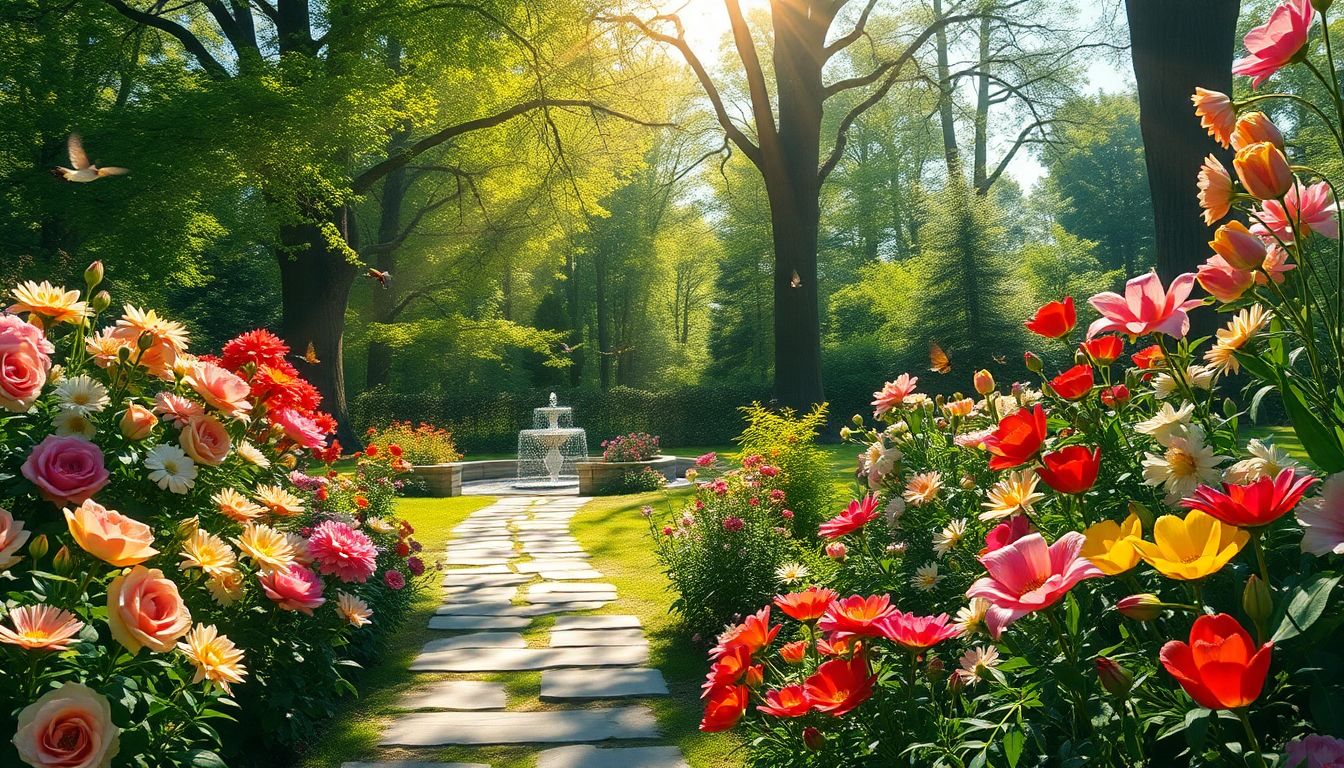
Imagine walking through a vibrant garden; the colors of blooming flowers dance before your eyes, while the sweet scent of roses fills the air. Such moments offer more than just visual delight—they immerse us in nature's magic. Gardens are not just patches of land; they are treasures that enrich our lives in countless ways. They blend aesthetics, ecology, and personal well-being, making them elegant sanctuaries in our busy world.
Gardens offer a unique blend of aesthetic appeal, ecological benefits, and therapeutic value, enriching our lives in countless ways.
The Aesthetic Allure of Gardens: A Symphony of Sight and Scent
The Art of Garden Design: Exploring Principles of Composition and Balance
Garden design is an art form that brings beauty and harmony to our spaces. Classical gardens, like the famous Versailles in France, showcase symmetry and grandeur, while Japanese gardens emphasize tranquility and simplicity. Each design tells a story, inviting us to pause and appreciate its unique charm.
The Power of Color and Texture in Garden Aesthetics
Color plays a critical role in how we perceive a garden. Vibrant yellows and reds can energize a space, while soft blues and greens promote calmness. Statistics show that approximately 28% of gardeners consider the color of plants as a primary factor when designing their gardens. Textures, such as the contrast between smooth leaves and rough bark, add depth and interest, creating visually engaging environments.
The Fragrance of Flowers and Herbs: Engaging the Sense of Smell
The aromas of gardens are just as important as their visuals. Flowers like lavender and rosemary not only beautify but also enhance our mood through aromatherapy. Certain scents can reduce stress and promote relaxation, turning an ordinary garden into a sensory haven.
Gardens as Ecological Havens: Biodiversity and Sustainability
Supporting Local Ecosystems: Attracting Pollinators and Beneficial Insects
Gardens are vital for local ecosystems, providing food and shelter for pollinators like bees and butterflies. With the global bee population declining by nearly 30% over the past few years, every garden can make a difference by creating a welcoming habitat for these essential insects.
Sustainable Gardening Practices: Water Conservation and Organic Methods
Sustainable gardening is becoming increasingly important. Techniques such as xeriscaping, which uses drought-resistant plants, support water conservation. Additionally, organic pest control strategies, like introducing ladybugs to manage aphids, promote a healthier environment without harsh chemicals.
The Role of Gardens in Combating Climate Change
Plants have an incredible ability to sequester carbon, helping to mitigate climate change. Urban gardens and green spaces are critical in absorbing carbon, promoting cleaner air, and combating the heat island effect in cities.
The Therapeutic Power of Gardens: Restorative and Healing Spaces
Stress Reduction and Mental Well-being: The Impact of Nature on Mental Health
Research reveals that spending time in nature can reduce stress levels by up to 70%. Gardens are therapeutic landscapes that provide peace and tranquility, offering an escape from daily pressures. Engaging with nature enhances our mental well-being.
Physical Activity and Health Benefits: Gardening as a Form of Exercise
Gardening is not just about growing plants; it also serves as a healthy form of exercise. Studies indicate that an hour of gardening can burn around 300 calories, making it a fun way to stay active while enjoying nature's beauty.
Therapeutic Gardens and Horticultural Therapy: Supporting Healing and Recovery
Many hospitals and rehabilitation centers now feature therapeutic gardens. These spaces support recovery by promoting relaxation and providing a sensory-rich environment. Programs focusing on horticultural therapy illustrate how gardening can aid physical and mental health.
Gardens as Social Hubs: Community and Connection
Community Gardens: Fostering Collaboration and Shared Resources
Community gardens bring people together, fostering collaboration and shared resources. Initiatives like the "Guerrilla Gardening" movement show how urban spaces can be transformed through community engagement, providing fresh produce and green spaces for neighborhoods.
Public Gardens: Accessible Green Spaces for Recreation and Education
Public gardens serve as accessible green spaces where everyone can enjoy nature. Many offer educational programs, teaching visitors about plant care, sustainability, and biodiversity. Examples include the Brooklyn Botanic Garden and the Missouri Botanical Garden, both promoting learning and appreciation of nature.
Social Engagement and Connection Through Gardening
Gardening clubs and shared projects enhance social bonds. These activities foster connection and community, providing a sense of belonging that can enrich lives and strengthen neighborhoods.
The Practicalities of Garden Creation and Maintenance
Choosing the Right Plants for Your Space and Climate
Selecting the right plants is crucial to successful gardening. Consider your local climate, soil conditions, and available sunlight. Local gardening centers often provide valuable advice tailored to your specific environment.
Basic Garden Maintenance Techniques: Watering, Weeding, and Pruning
Maintaining a garden requires attention. Here are some basic tips:
- Watering: Water early in the morning or late afternoon to minimize evaporation.
- Weeding: Regularly remove weeds to prevent competition for nutrients.
- Pruning: Trim plants to encourage growth and keep them healthy.
Tools and Resources for Successful Gardening
Having the right tools can simplify your gardening tasks. Essential tools include hand trowels, pruning shears, and a watering can. Online resources and gardening apps can provide helpful tips and guidance for new gardeners.
Conclusion: Embracing the Beauty and Benefits of Gardens
Gardens embody aesthetic pleasure, ecological importance, and therapeutic value. They enhance our surroundings, support biodiversity, and promote well-being in our lives. Each garden tells a unique story, and every individual can contribute to making green spaces thrive. Consider creating a garden or visiting one to fully appreciate the beauty and benefits that these natural sanctuaries provide. Embrace gardening, and let nature's beauty enrich your life today.
